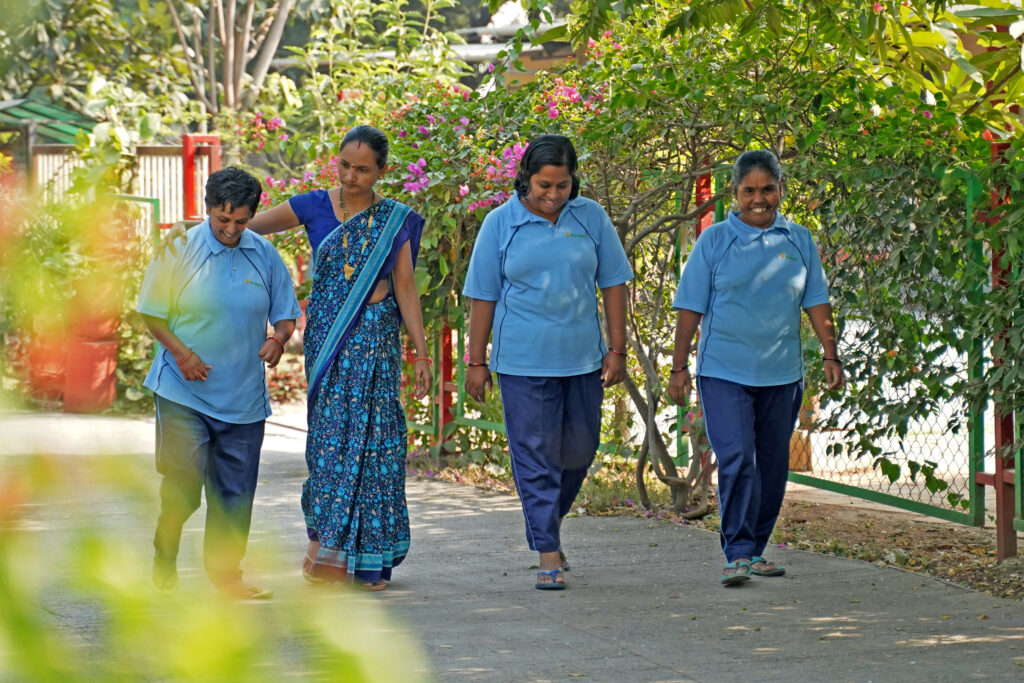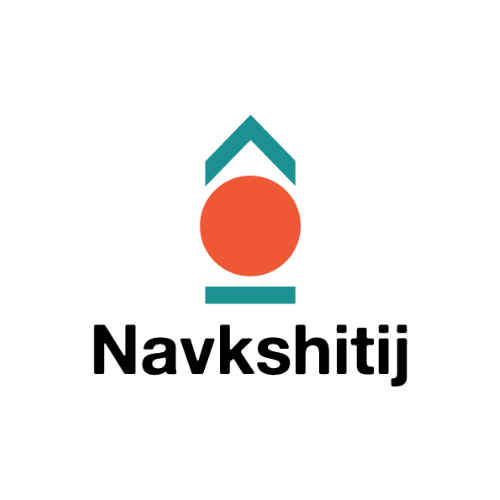
WE saw the enormity of the problem; it was overwhelming. Most parents of IDs had surrendered to fate. Bringing up an ID child took away so much of their energy and their life that they had nothing left in the tank. Parents with borderline IDs devoted themselves to self-advocacy and finding a job for their ward. More than 90% of the parents were waiting for a miracle to happen. They hoped that the government would create such homes and run them. That could take years or even decades because IDs came last on the list of any development programme. We visited some residential facilities started by committed people. Each had a different model. In the rural areas, the parents just left it to God and depended on their neighbours and the extended family.
Scaling the Navkshitij model
The Navkshitij model seemed to offer the best life to an ID. The model was ID-centric and yet the IDs lived among normal people of all age groups. Each unit was like a huge joint family. In addition, our model had stood the test of time. We had bravely faced many unexpected calamities and had landed on our feet. Mainly, our special friends were happy and healthy. They were living a life of dignity in a safe haven. Here, the impact of their weaknesses was mitigated and they were given opportunities to explore their strengths. We were exploring the possibility of scaling the Navkshitij model of residential rehabilitation.
We realised that no organisation can single-handedly create enough homes to solve the problem. It would take the government years to reach the IDs. The aim was to empower parents, parent organisations and other NGOs to start such homes. Before that, we needed to bring in systems that could be replicated by others.
Bankable system
Ideally, there should be a system that has an end-to-end plan. Parents of IDs pour their hearts and souls into making their children as self-sufficient as possible. Hospitals and many NGOs are diligently working on early detection and early intervention. Special schools take care of IDs till the age of 18 to 20. They help toilet train the IDs, teach them life skills and work on skill development and vocational training. What’s required is a smooth transition from personalised parental care to special schools and, further, as adult IDs, to a residential facility that will be their permanent home away from home.
This will be the place where the IDs get a chance to enjoy their youth and settle down comfortably, age gracefully and stay peacefully for the rest of their life. I can imagine what a relief it would be for a young couple that has been told that their child is ID to know that there is a system they can bank on to secure the future of their child. We need to join hands and form a seamless transition process.
There is no quick-fix solution; it is a tedious and long process. There are four major challenges to creating an ideal end-to-end solution.
- Lack of trained caregivers and managers to run residential homes
- Paucity of organisations that are ready to start such homes: Society is just not aware.
- Lack of awareness and apathy among parents of IDs, compounded by the social stigma attached to keeping an ID child in an institute. Parents are worried about what their families and extended families will say.
- Finally, of course, funds. The government doesn’t support residential homes. All schemes are on paper. Officials are not even aware of their existence. Schemes are announced but legislations have not been passed. Most schemes are meant for physical disabilities, including the visually challenged and hearing impaired, with nothing trickling down to the intellectually disabled. There seems to be a conviction among people that IDs are doomed and beyond redemption.
Creating courses, OM, SOP
We decided to address these issues. We created two courses: a three-month course for caregivers and a six-month course for managers of residential centres. We created an Operations Manual that tells what to do in each department and every contingency. We created an SOP (Standard Operating Procedures) that spells out how to do it. We created checklists to ensure checks and balances. This was our training material. We have already established three different models that are running well, guided by the principles of Navkshitij. These serve as hands-on training centres.
Convincing parents
We visited established special schools, motivating them to join hands with us. We met parents, parent groups and organisations. We encouraged them to visit our centres and see how happy our special friends are. We made them aware that the option to keep their child in an institute like Navkshitij is not shirking of responsibility, but, rather, fulfilling it to the best of their ability, done in the best interest of the child. Relatives, friends and society will talk, no matter what we do. Fact is, they cannot take care of our ward for life. They are not obliged to. We need to grow beyond ‘What will they say!’
Navkshitij is now a movement
We are running awareness campaigns for all stakeholders: IDs, parents, parent organisations, NGOs, government agencies and, mainly, HR and CSR departments of corporates. We are implementing new software systems like Keka for HR, Tally and Synergy Connect for accounts, vendor management systems and MIS. The staff from all our centres have Zoom meetings every week to share experiences and exchange ideas.
We are working with training institutes to help us float our courses. We talk to youth about social entrepreneurship. With the CSR law, the youth can carve out a future for themselves in the field of social work.
Eight months ago, we increased our visibility on social media to more than tenfold. We are now getting queries from all over India. Admissions are growing at a clipping rate. Young blood and new energy is pouring into the establishment. We are attracting the attention of MNCs.
We know that involving multiple organisations to work together is going to be a slow process. The stoic, thinking and dependable middle class will have to roll up its sleeves and get ready to work at the shop-floor level. Philanthropists and corporates will have to stand firmly behind these organisations.
Today, Navkshitij is not just an NGO; it is a movement.
Read Previous Blogs:
Deep diving into the world of IDs (continued)
Deep dive into the world of the Intellectually Disabled
Rehabilitation and Inclusivity: An Introduction
Be A Part Of Our Spread Happiness Movement Bringing Happiness: Lighting Up The Lives Of Special Friends Donate– Your contribution directly supports our programs and services, ensuring that persons with intellectual disabilities (PwIDs) receive the care and support they deserve. Register- Join our community as a volunteer or supporter to stay updated on our initiatives and opportunities for involvement. Spread The Word- Share our mission with others to raise awareness and advocate for the rights of PwIDs, amplifying the impact of our work. #BringingHappiness #LifeatNavkshitij #LightingThePath
Get Connected on LinkedIn: Dr. C. R. Desai
